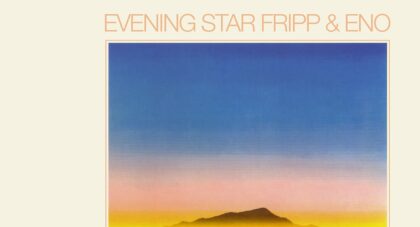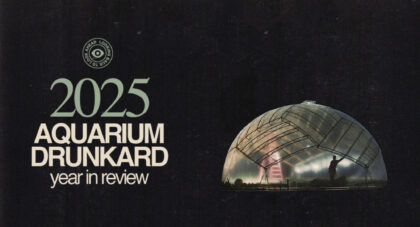Compared to his contemporaries, Morphine's Mark Sandman came off like more of an out-of-place beat poet than the zeitgeist's 'slacker' guitar sound of the day. With a presence tapped in to the lineage of Tom Waits and Bukowski, Morphine worked the noir and worked it hard. They dubbed their sound "low rock." No one else sounded anything like them at the time...no one else sounds anything like them today.
Below is my conversation with the filmmakers behind the new Morphine documentary, Cure For Pain: The Mark Sandman Story. Jeff Broadway, Dave Ferino and Rob Bralver discuss the documentary, the process behind it and the case for Morphine in 2011.
Aquarium Drunkard: Why Morphine, why now?
Jeff Broadway: When I was maybe 10 or 11, I was introduced to Mark’s music by my mom and her sisters because Mark was a second cousin of theirs. I thought it was awesome that I had some rockstar of an extended cousin and started listening to a lot of Morphine as a teenager. As I got older and more into Mark’s music and the idea of family, I began considering how a film, most likely a doc, could be developed from his life story. When we started really getting serious about the project in 2008, it was like, okay, so OG Morphine fans are in their 30s and 40s and have seen a decade of music go by without hearing a sound quite like Morphine’s. They miss it. We wanted to remind them of that nostalgia and introduce the music to a new generation of listeners.
AD: Now a decade-plus since Sandman's death, the music feels as timeless and out of step as ever. Your film feels like what could be the beginning of getting the Morphine conversation started again.
Jeff Broadway: I agree. I think enough time has gone by since he passed that people will see the film and immediately reconnect with the music — above all. They’ll go download it. Talk with friends about it. Introduce friends to it. And Morphine will become appropriately relevant again. But beyond the film re-catalyzing the Morphine conversation, I think people will walk away from the film with a deeper appreciation of the evolution and breadth of an artist who left too soon.
AD: What's the temperature like out there? Are young people beginning to discover the band's music?
Jeff Broadway: I think so, but I also think it’s a bit early to say definitively. The film’s been seen by maybe a couple thousand people and needs more time in circulation before we can determine what sort of bump in sales the Morphine catalog might receive as a result of our film. I am confident, though, that the doc will only increase the appreciation of Mark’s and Morphine’s global cult stardom.
AD: Tell me a bit about accruing the doc's footage. Had Mark died in 2009, instead of 1999, I imagine there would have been near-infinite droves of media to delve through due to the advent of camera phones, etc.
Rob Bralver: There was definitely a limited amount of material to work with, and we just had to make do with what we could. The movie is a pretty big grab bag of footage - basically anything we could get our hands on. As you say, Mark was popular before the days of entire audiences filming shows in HD on their phones, so what we had to work with was mostly dusty, distorted VHS tapes we found in the basement of Mark's old studio, Hi-N-Dry, combined with 8mm family footage, plus our own present day interviews. Most of the archival stuff in the movie was shot on analog cameras ten to thirty years ago and then digitized, so while it was limiting in terms of what we were able to use to tell our story, it also gives the movie some of that period feel.
Only the good shit. Aquarium Drunkard is powered by its patrons. Keep the servers humming and help us continue doing it by pledging your support.
To continue reading, become a member or log in.


